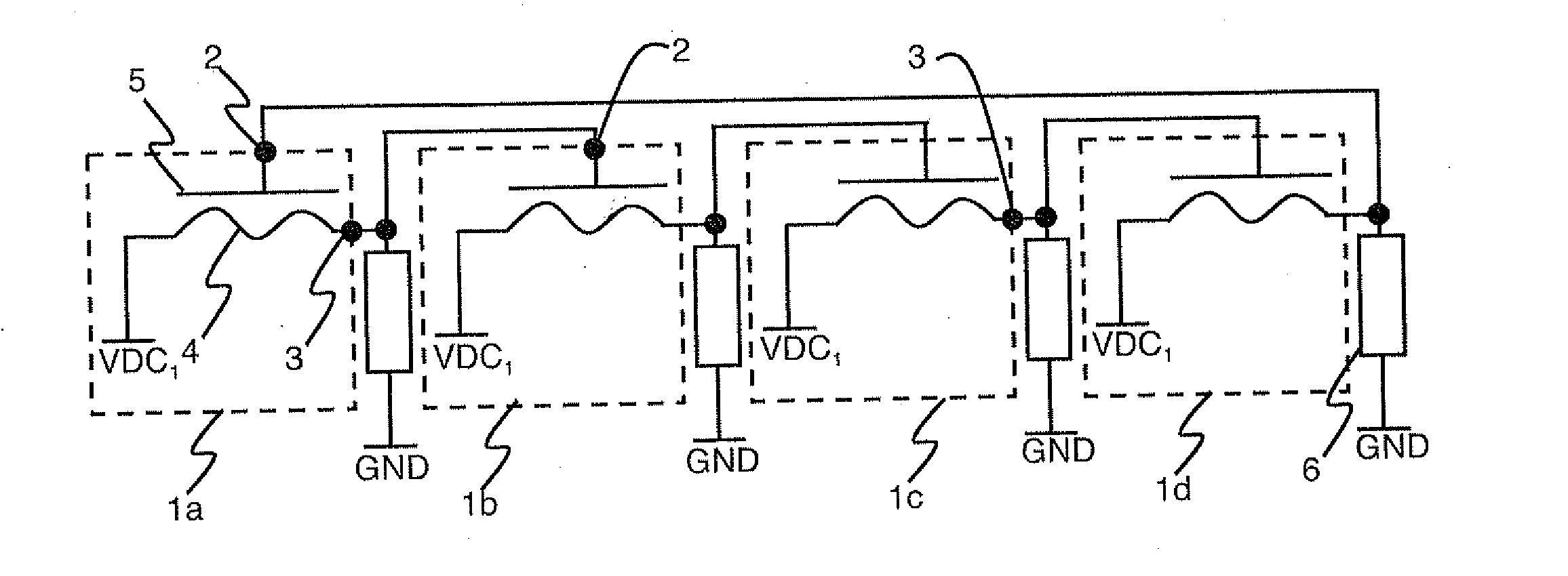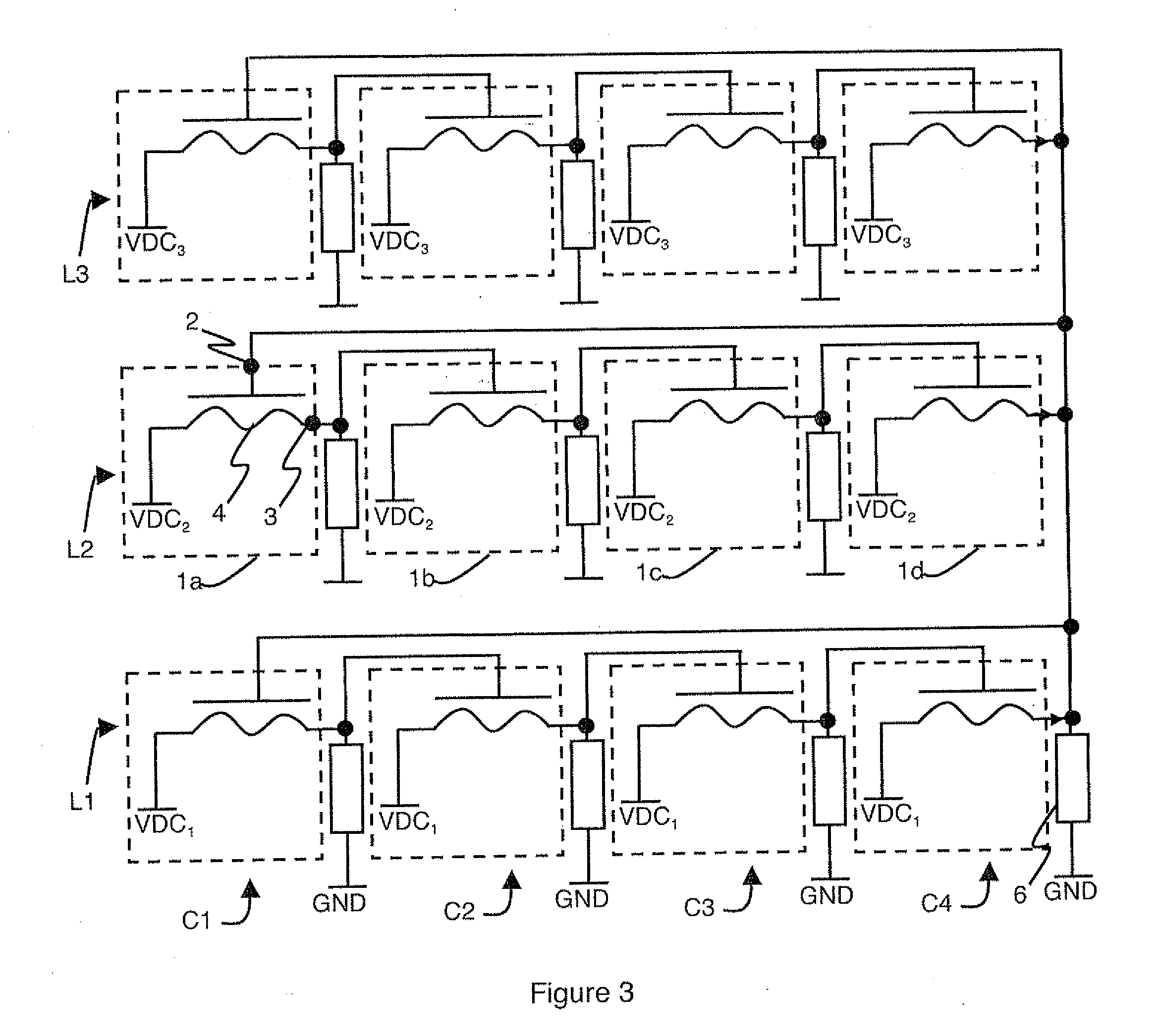Oscillator based on series of four nanowires
- Summary
- Abstract
- Description
- Claims
- Application Information
AI Technical Summary
Benefits of technology
Problems solved by technology
Method used
Image
Examples
Embodiment Construction
[0013]As illustrated in FIG. 1, the oscillator comprises a first series of four sub-assemblies 1 (1a, 1b, 1c and 1d) which are connected together in series to form a closed loop. Each sub-assembly 1 of the first series comprises an excitation terminal 2 and an output terminal 3 and is connected to two other adjacent sub-assemblies 1. if the first series is considered to comprise first 1a, second 1b, third 1c and fourth 1d sub-assemblies, second sub-assembly 1b is connected to first sub-assembly 1a and to third sub-assembly 1c. Third sub-assembly 1c is also connected to fourth sub-assembly 1d which is itself connected to first sub-assembly 1a.
[0014]Each sub-assembly 1 comprises a resonator 4, excitation means 5 of the resonator and detection means of movement of the resonator. In each sub-assembly 1, a nanowire 4 constitutes an electromechanical resonator. Movement of the nanowire 4 is converted into a representative electric signal by a suitable transductance means formed by the de...
PUM
 Login to View More
Login to View More Abstract
Description
Claims
Application Information
 Login to View More
Login to View More - R&D
- Intellectual Property
- Life Sciences
- Materials
- Tech Scout
- Unparalleled Data Quality
- Higher Quality Content
- 60% Fewer Hallucinations
Browse by: Latest US Patents, China's latest patents, Technical Efficacy Thesaurus, Application Domain, Technology Topic, Popular Technical Reports.
© 2025 PatSnap. All rights reserved.Legal|Privacy policy|Modern Slavery Act Transparency Statement|Sitemap|About US| Contact US: help@patsnap.com



